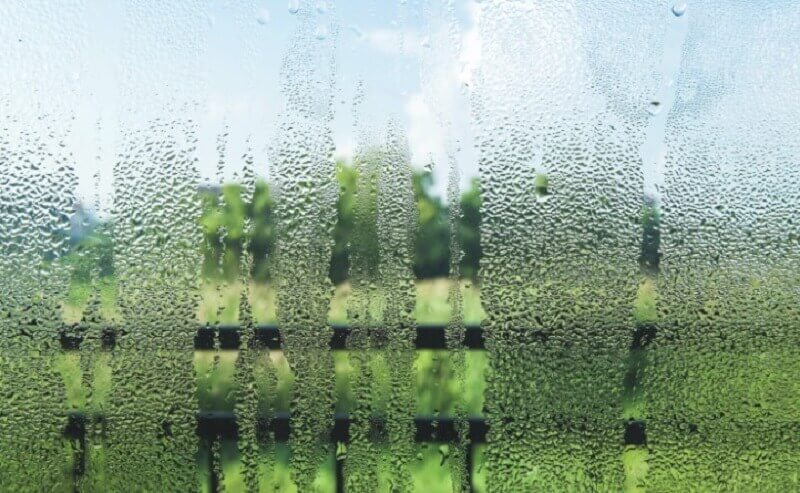What is humidity? Most people only associate humidity with the summer and forget about it once the season ends. However, it is a vital environmental factor, which needs to be monitored. Basically, it refers to the amount of water vapor in the air.
Humidity is usually measured using a hygrometer and expressed as relative humidity – a percentage reading that accounts for temperature. But what if you don’t have a hygrometer? Can you still be able to measure humidity?

Contents
How to calculate indoor humidity without a hygrometer
Here are 3 ways to measure humidity without a hygrometer:
1. Use ice cubes
This is a simple way of determining whether you have high or low humidity in your home. However, it does not provide an accurate measurement.
Requirements: a glass, water, and ice cubes
- Fill a glass with water and add about 4 ice cubes to the water.
- Place the glass in the room you want to estimate humidity. Note: the room should not have changing humidity levels, for example, bathroom or kitchen.
- Leave the room and make sure no one enters for about 5 minutes.
When the time is up, go check on the glass of water. If you find condensation or water droplets dripping on the outside, the humidity is high. If there is no condensation, the humidity levels are low.
2. Use wet and dry bulb temperatures
The wet and dry bulb temperatures technique offers a more accurate measurement of humidity.
Requirements: two mercury thermometers, a cotton ball, and room temperature water.
- Moisten a piece of cotton ball with the room temperature water and wrap it around one thermometer. This becomes the wet bulb, while the unwrapped one becomes the dry bulb.
- Place both thermometers on the cardboard (side by side) and leave them in the room you want to measure.
- Wait for about five minutes then check on them. Note the temperature difference between the two thermometers, as well as the dry-bulb temperature.
With the temperature measurements noted, go online and find a relative humidity chart. Convert the readings to find relative humidity.
3. Use your phone
Did you know that you can measure humidity with an iPhone or an Android smartphone? Nowadays, phones are not just for making calls and sending messages; they have been turned into miniature weather stations.
On your phone’s app store, you can find several apps to check humidity levels. However, for more accurate measurements, you might have to download apps that use third-party humidity measuring devices. A good example is the Govee temperature monitor that works great with iOS devices.
Why is it important to measure humidity accurately at home?
Here are a couple of reasons why you should measure indoor humidity:
- It can affect comfort in your home: humidity that is too high can cause you to feel or induce allergies. Likewise, humidity that is too low can dry your skin and nasal cavity, leading to sores.
- It can damage your house: humidity levels that are too high can damage ceilings, wooden surfaces, and even walls.
- It can cause food spoilage: high humidity encourages the growth of mold, which can cause your food to spoil.
Wrapping up
Controlling humidity levels in your home can increase your comfort. It can also protect you from illnesses, not to mention prevent food spoilage or home damage.
If you don’t have access to a hygrometer, use any of the above-mentioned methods to measure humidity without a hygrometer.
Related Articles
